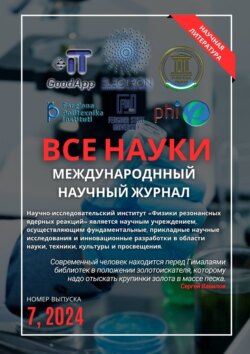Читать книгу Все науки. №7, 2024. Международный научный журнал - Ибратжон Хатамович Алиев - Страница 16
ФИЗИКО-МАТЕМАТИЧЕСКИЕ НАУКИ
ON THE MODERN POSSIBILITIES OF TRANSMITTING A DISCRETE SIGNAL BETWEEN SYSTEMS USING THE TUNNELING EFFECT
Results
ОглавлениеAccording to the results of the study, a function depending on 2 variables was obtained, which can be constructed and according to the initial projection, the first graph of the function is formed without an additional power factor. After applying the appropriate processing (18), the function remains the same, but its parameters describe the actual picture (Fig. 2).
Fig. 2. Graph of the probability distribution of finding a signal beam
So, from Figure 2 it is clearly seen that as time passes along the numerical axis in increments of 2.35022802 seconds-meters to 70.51 seconds-meters or along the ordinary axis in increments of the same amount of meters to 30.55296 meters of range, it is possible to state the probability of finding a beam at 11.27337%, which makes it possible to assert, based on The parameter of 70.51 seconds is meters or 21,137,419,062 meters in the usual metric coordinate system, which means that the beam is likely to be found near the Earth and the signal can be received accordingly.
Speaking of losses, it is enough to use the expression for the barrier passage coefficient (18) and its graph (Fig. 3) as the initial beam energy approaches the value of the potential barrier, determined relative to the case under study in (2), where it is also important to note that in all cases the information carrier or The information about matter was electrons, for protons, deuterons, tritons, other ions, quarks, mesons and other particles, such decompositions will have a different character.
Fig. 3. Percentage of information loss during tunneling
15. Witasse, O.; Altobelli, N.; Andres, R.; Atzei, A.; Boutonnet, A.; Budnik, F.; Dietz, A.; Erd, C.; Evill, R.; Lorente, R.; Munoz, C.; Pinzan, G.; Scharmberg, C.; Suarez, A.; Tanco, I.; Torelli, F.; Torn, B.; Vallat, C.; JUICE Science Working Team (July 2021). JUICE (Jupiter Icy Moon Explorer): Plans for the cruise phase. Europlanet Science Congress (EPSC) 2021. doi:10.5194/epsc2021—358. Retrieved 28 August 2021.
